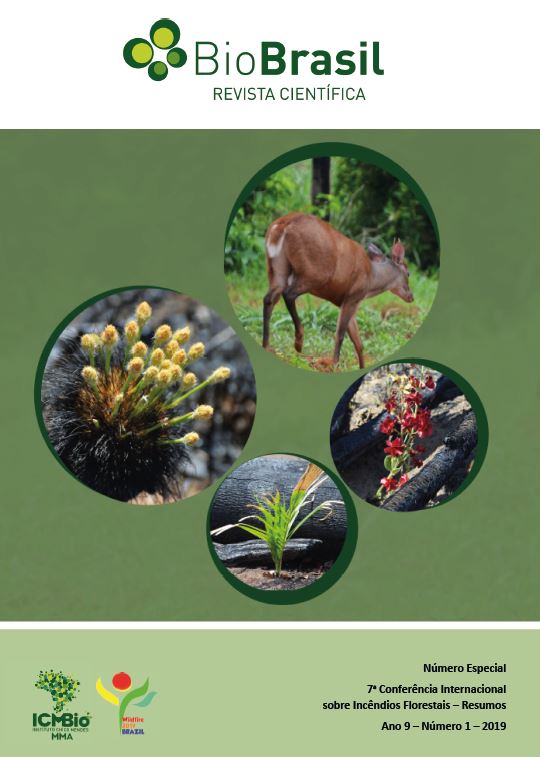Automated monitoring of large forest fires using near-real time satellite data- Experience from India
DOI:
https://doi.org/10.37002/biodiversidadebrasileira.v9i1.1139Palabras clave:
Forest Survey of India (FSI), Large Forest Fire Monitoring, Python Automation, Nearreal time Wildfire Alerts, SNPP-VIIRS, MapServerResumen
Large Forest Fires, although are few in India, cause a significant damage to the forests and its biodiversity every year. The Forest Fire Alerts System (FAST) by Forest Survey of India adopted widely in India uses satellite based fire detections to alert forest managers through SMS/email alerts. An automated system has been developed and incorporated in FAST version 3.0 in January 2019 to automatedly identify Large Forest Fire events (LFEs). It uses python script to identify candidate LFEs based on threshold of juxtaposed (SNPP-VIIRS) pixels and track each of them across future satellite passes. In order to account for spread of fires during consecutive passes (~12 hours), an assumed fire boundary was created by way of drawing a pre-defined buffer around the pixel clump and detections within it, is attributed to the same fire event. The assumed fire boundary is redrawn based on the current satellite detections for a single LFE until it is active. Information on the number of fire affected active pixels, total number of fire affected pixels, administrative and management boundary, KMZ file and web-linked .png map of the fire location etc. are provided to the users through SMS. The objective of this programme is early notification to the forest departments and the to contain the potential large fire as soon as possible. Moreover, this system also provides the opportunity to develop an archive of LFEs that could be used for a variety of purposes including rehabilitation planning of fire-affected forests. It also allows creating the past scenarios of LFEs in the country since 2012. This unique large forest fire monitoring system has potential for adoption in other countries as well as it is cost-effective. Through this study, two different thresholds (3 and 5 pixels) were used to create the initial detection. On comparing, the difference in the number of LFEs is huge especially in the initial days of the activity and thus, needs to be explored further. As per the 3-pixel based analysis, India experienced 7882 LFEs in the year 2018 and 8755 events in the year 2016 burning for atleast more than 24 hours.
Descargas
Descargas
Publicado
Número
Sección
Licencia
Derechos de autor 2019 Os autores mantêm os direitos autorais de seus artigos sem restrições, concedendo ao editor direitos de ção não exclusivos.

Esta obra está bajo una licencia internacional Creative Commons Atribución-NoComercial-SinDerivadas 4.0.
Os artigos estão licenciados sob uma licença Creative Commons Atribuição-NãoComercial-SemDerivações 4.0 Internacional (CC BY-NC-ND 4.0). O acesso é livre e gratuito para download e leitura, ou seja, é permitido copiar e redistribuir o material em qualquer mídia ou formato.











